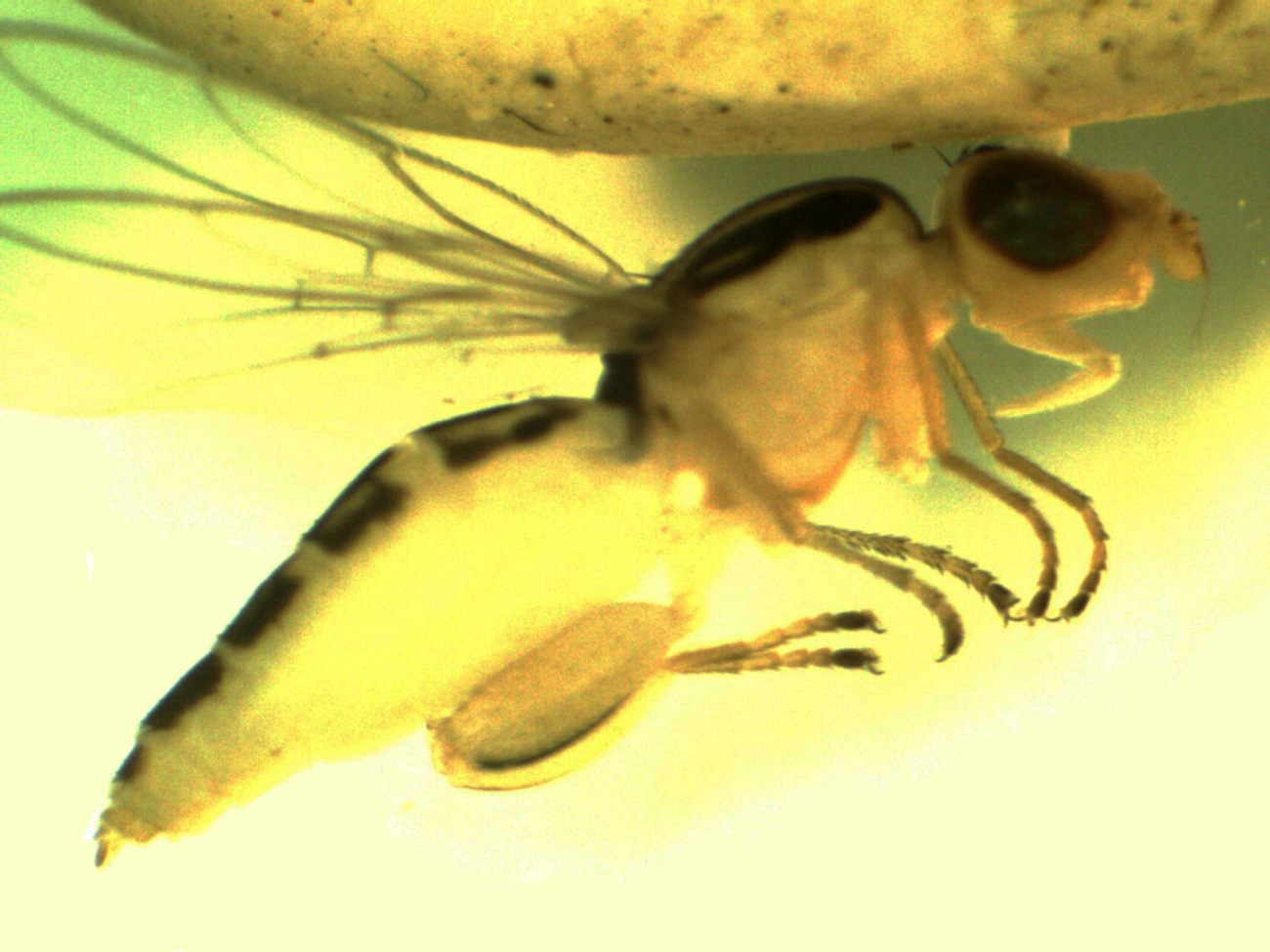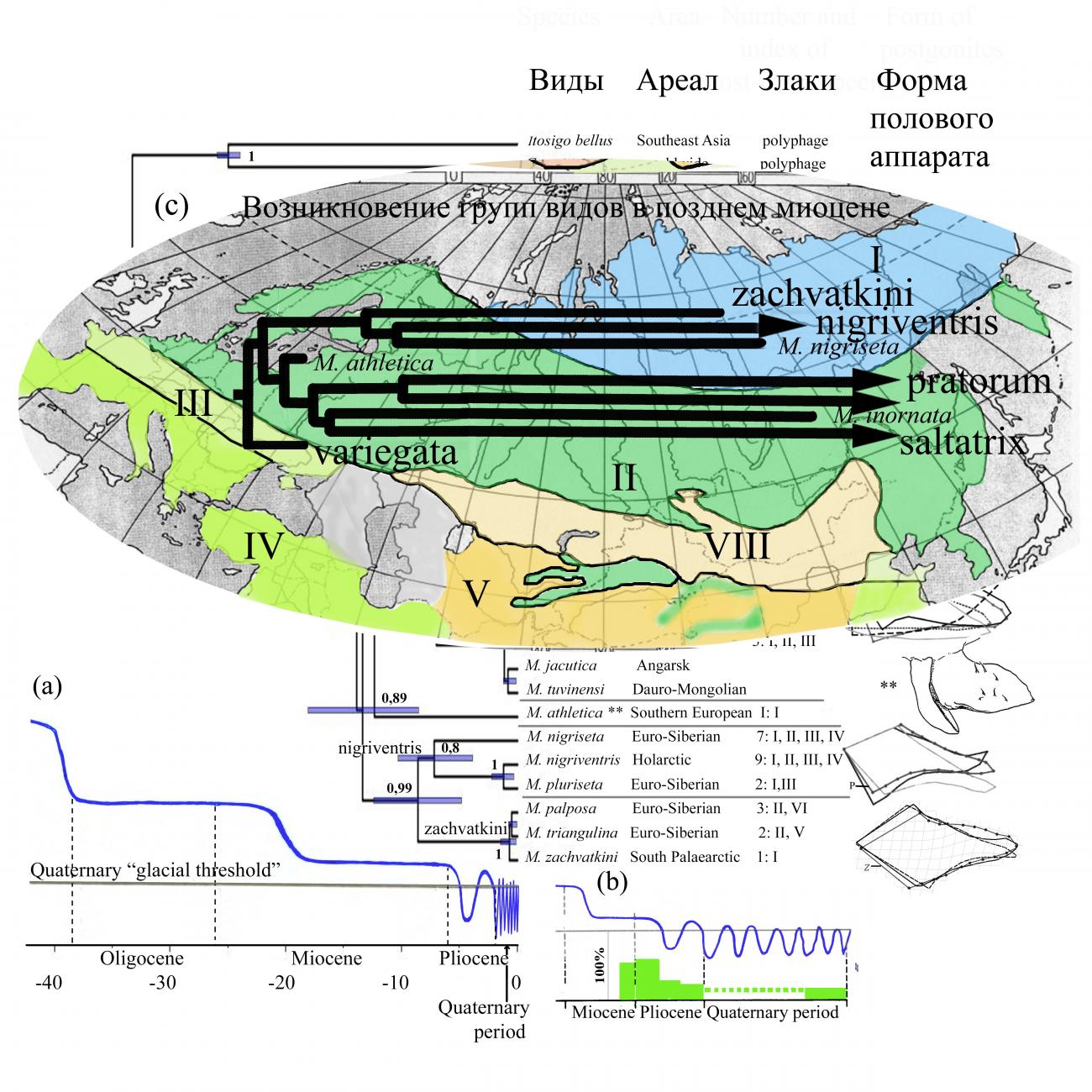
The IEE RAS staff analyzed the history of the emergence of diversity of cereal flies of the genus Meromyza in the Northern Hemisphere in the Neogene period. In the BEAST program, a chronogram was constructed based on a section of the mtDNA gene CO1 (770 bp) of 29 dominant species of cereal flies. Based on molecular data and the morphology of the male reproductive system, 5 clusters were identified, and the time of their formation and spread was determined.
It has been shown that the decrease in average annual temperatures in the Neogene period correlates with the increase in species diversity of grass flies. The time of formation of the common hypothetical ancestor of Meromyza flies is 13.9 million years ago. A significant cooling in Eurasia at the beginning of the Miocene led to the emergence of the first ancestral individual of the genus. A slight decrease in temperature until the end of the Miocene and in the Pliocene led to the emergence of several ancestral lines of speciation, which gave rise to groups of species. A sharp change in temperature in the Quaternary period led to a burst of speciation from 2.5 million years ago to 400 thousand years ago. The early emergence of European species forming the "variegata" species group, and then species included in the "nigriventris" and "zachvatkini" groups, confirms the origin of the first speciation center of grass flies of the genus Meromyza in Europe. At this time, the ancestral individuals of three Holarctic species of this genus arose. The tendency for new species to spread towards Asia can be traced along the range of species in the nigriventris and zachvatkini species groups. About 5 million years ago, cooling began again. The aridization of the climate during the spread of Holarctic species to the east allowed the formation of a new center of speciation — the Asian forest-steppes. The passage of species through the Bering Isthmus led to the emergence of another center of origin — North America. The exchange of regional species of cereal flies later than 5 million years ago was impossible due to the disappearance of the Bering Isthmus.

The correspondence of the sexual structures of the male and female of the same species largely determines the protection of the species genome from the penetration of foreign genes at the initial stage of mating. The correspondence of the sexual structures of the male and female grain flies occurs due to changes in the shape and size of special elements of the male sexual structures. Species of the "variegata" cluster have sexual structures of medium size, in the Eurasian species they are smaller, and species from the "salatrix" and "pratorum" groups, common in Asia, have larger forms.
The modern distribution of grain flies is determined by their ecological preferences - they are found on forest edges, meadows and roadsides. This confirms the hypothesis that the ancestors of Meromyza flies arose in sparse forests and grassy refugia of forest-steppes. The diversity of grain flies in the centers of speciation is associated with the adaptation of the species to a new host plant. Speciation within a group of species correlates with polyphagy and development on cereals from different subtribes of cereal fly species close to the ancestor, and increased food specialization in the process of formation of other species.
The work was published in the journal Biology Bulletin: The Evolution of Holarctic Grass Flies of the Genus Meromyza Mg. (Diptera, Chloropidae) in the Neogene. Safonkin A. F., Triseleva T. A., Yatsuk A. A. Biology Bulletin, 2024, No. 6
